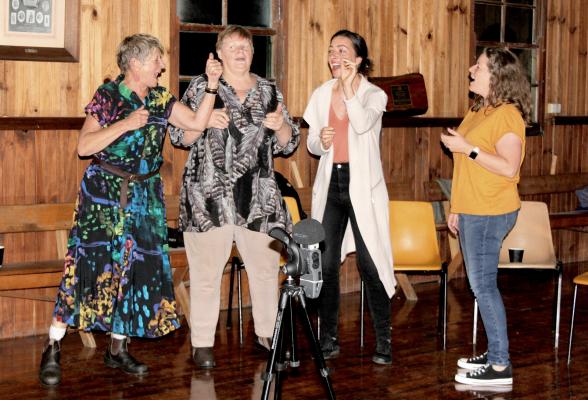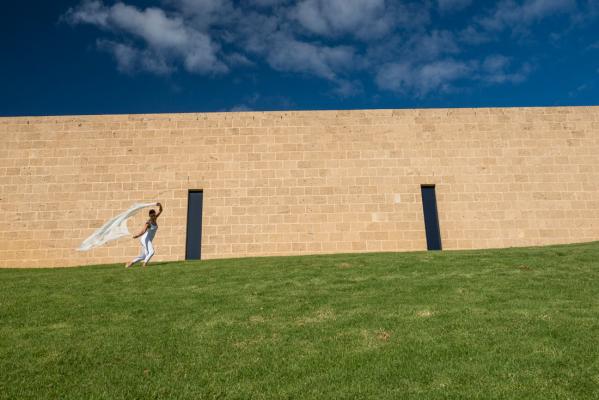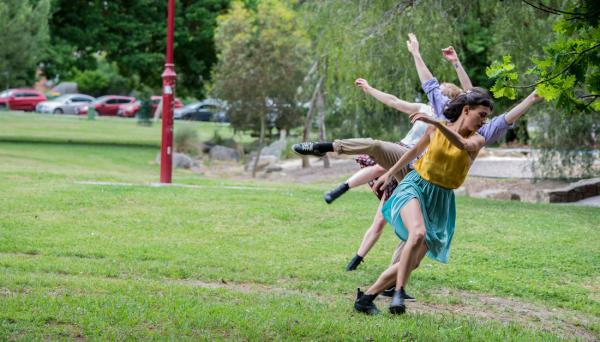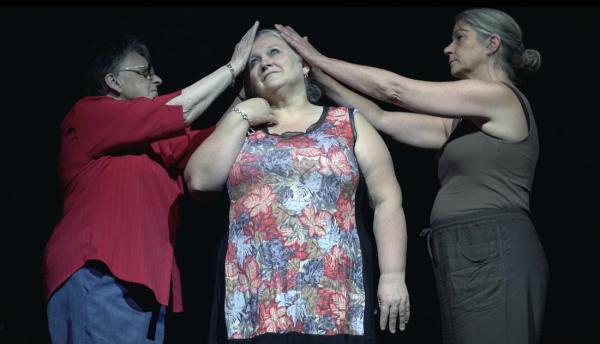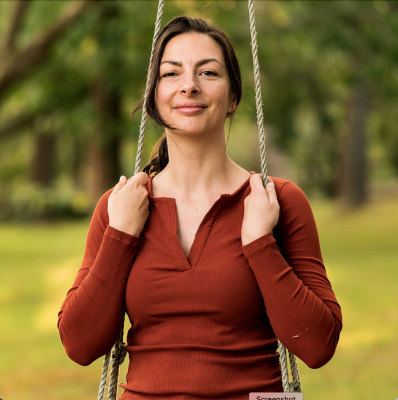
Upper Beaconsfield performance and visual artist Gülsen Özer has been working with communities across the Cardinia shire and beyond, for many years, bringing forward ideas of power dynamics, connections and relationships through dance, choreography, sound art and public installations. Most recently she facilitated singing workshops in Tonimbuk as part of a bushfire recovery program. SHELBY BROOKS caught up with her for an interview.
Gülsen, who is of Turkish and Aboriginal heritage, grew up in Casterton, a five hour drive from Melbourne, past Ballarat.
She described it as a typical small town where she was able to spend lots of time with nature.
After finishing school in Hamilton, she moved to Melbourne to study a performing arts degree at Monash University, double majoring in theatre studies and visual culture while minoring in dance.
“Visual culture, was probably like the new art history, or it was back then,” Gülsen said.
“You still have to understand the history but a lot of the readings and the works you were looking at were quite contemporary.
“So that was from architecture, to museums, galleries, public art practise and it did include performance, so it was a good crossover with theatre studies. It gave me a good theoretical and case study understanding of a broader perspective of performing arts that straight theatre studies didn’t always do.”
Her honours thesis was on drag kings, women performing masculine identities (a lot more unusual than the mainstream drag queen).
“After I submitted my thesis I continued to explore the practice and tradition and I had a drag character of my own for a while,” Gülsen recalled, although admitted it had only been a short period in her life.
“I lip-synced to Jimmy Hendrix’s ‘Foxy Lady’ for my first performance. My performance of drag was pretty celebratory- there are so many different ways to do drag but mine was a kind of celebration of that Euro-stern looking but pretty looking man.
“The whole concept of masculinity comes from the idea of a mask, it’s usually performative and it’s marketed as a kind of realness but it’s very constructed, even the most understated blokiness is hugely codified and can be replicated and can be performed.”
Gülsen lived overseas for a few years before she and her partner returned back to Australia to settle down.
“My partner’s family farm is in Upper Beaconsfield. We’ve been here about seven years now and we love it,” she said.
“Upper Beaconsfield has got similarities to Casterton, just in the beauty of it, but the connectivity is quite a bit different.
“I’m trying to connect a bit more with some of the community through committees. It might be that it’s not that it’s not there, it’s just that I haven’t tapped into it that much.
“I think the older generation, and people who have been here a long time, there is a sense of knowing your neighbours and calling up if there are any emergencies.”
For many years now, Gülsen has brought her art expertise into a community context through workshops, art installations and performance projects.
“I am enchanted with, and my practise is, performance,” Gülsen said.
“Dance, choreography and spoken word- the performative act. That’s where a lot of my skills are.
“In the broader sense, I say I am a performing and visual arts practitioner.”
But opportunities to engage the community through the arts can be somewhat scarce.
“I think that there might be a lack of confidence in the appetite in our community in Cardinia,” Gülsen said.
“I think that there is heaps more capacity [for arts in the community] and more possibilities to make sure art is for everyone and bring more and more people into art experiences.
“I recognise that is a particular skill set and that not all creative artists and workers are interested in doing that but I think that it’s a largely untapped resource that could really transform things. You sort of have to find opportunities and find ways of getting them off the ground.”
One of Gülsen’s first introductions into the connection between art and the community was being the chair of Emerald’s PAVE Festival.
“I always knew the arts were really important for connecting our community, both the intrinsic value of the art, but as well the incidental bonds that are made through shared activity,” Gülsen said.
“PAVE was kind of set up with the vision that connected communities can respond better to disaster, especially bushfire.
“I came to the PAVE Festival with more of a cultural lens, being an artist, I’m interested in cultural activities and how the arts can support cultural and social change. And I don’t mean that in a real hard core way, I just mean in a really supportive, beautiful way.”
Previously, Gülsen was on Cardinia Shire Council’s arts and culture reference group and is a member of the National Association of Visual Arts.
Most recently, she was selected by the Cardinia Shire Council and the Creative Recovery Network to host singing workshops out of the Tonimbuk Hall and with 100 local primary school students as part of the Western and Central Gippsland bushfire recovery program.
Gülsen, who was the lead artist, wanted to find a way for the community to connect back to the land.
“People always resonate with nature and the landscape and how it looks or sounds to them,” she said.
“Some say the sounds of the wind are part of them. People love ‘place’ and love land.
“So we wanted them to sing back to the land.”
Just like with the bushfire recovery, Gülsen said art has been a way for people to begin healing from the “trauma marathon” that was Covid-19.
“We know that how we recover is starting to do the things that gave us meaning or you can go into endurance mode forever,” she said.
“Some of those things are seeing friends, knitting, craft things, arts, things you might have put off, engaging in those cultural activities.”
Another project that Gülsen has undertaken in the local community was ‘Present Tense’ a dance piece with senior citizens from Kooweerup, presented at the Cardinia Cultural Centre.
“I really loved doing that,” Gülsen recalled.
“I remember when I was preparing the performers, who had a median age of about 80, I just talked to them about how special it was what they were doing and what they were offering audiences.
“I just thought it was a special opportunity for me to be making with them.
“Without being melodramatic, to have emotion, to have people be moved is really gratifying for me. I don’t know if I set out to do that, but I always feel pretty good when that happens.”
The project was a prime example that the arts can be for everyone.
“I love the idea that dance and movement is for all of life,” she said.
“I love challenging this idea that it’s just for the young and the athletic, and it should look a particular way.
“There was just so much beauty and knowledge in the bodies of the women who I worked with.”
Throughout all her projects, Gülsen said she is interested in exploring ideas surrounding power and relationships.
“I find I am naturally aware of hierarchies and what diplomacy and expectations are being presented,” Gülsen said.
“I am also interested in valuing empathy, kindness, different ways of valuing beauty, different ways that we connect with place and each other.
“I’m interested in amplifying the voices of people who might not have been given spaces to speak.”
Gülsen describes the art she creates with communities as a way of creating a “shared language”.
“It’s deep listening in a way, finding a way of me knowing you and you knowing me when we’re collaborating,” she said.
“It’s a way of knowing where we live, ways of building a connection between the environment and ourselves.
“I’m more interested in people but by extension I know that we are happier and healthier in the way that we relate socially if we are more in tune with our natural environment.”
Whether it is visual art that brightens someone’s day or a dance project that challenges stereotypes, Gülsen hopes all her work contributes to the idea of a ‘revolution of the possible’.
“I like the idea that my work is making a contribution to people’s concepts of what is possible,” she said.
“Arts can expand minds and open hearts and it can contribute to the idea of what is possible in our worlds and what is worthwhile.
“I hope it can inspire people to get if there is an opportunity.”
Gülsen hopes people might begin to think of art in the same way as people think of sport and recreation.
“I think we can learn so much from sport- not everyone is Rodger Federer but everyone can play tennis and they can play for their whole lives if they want to,” she said.
“I think art can and should be like that. I think sport and rec is a bit more artful than some artists recognise. We have a lot to learn and share.
“[Sport and arts are] choreographed, they’re collegial, there are competitive aspects to them. I do find I encourage artists to embrace and learn what they can from that sector and see how we can work together.
“I do also recognise there is an intrinsic value in the process of art making and the outcomes, there are really unique things that art can offer.”


